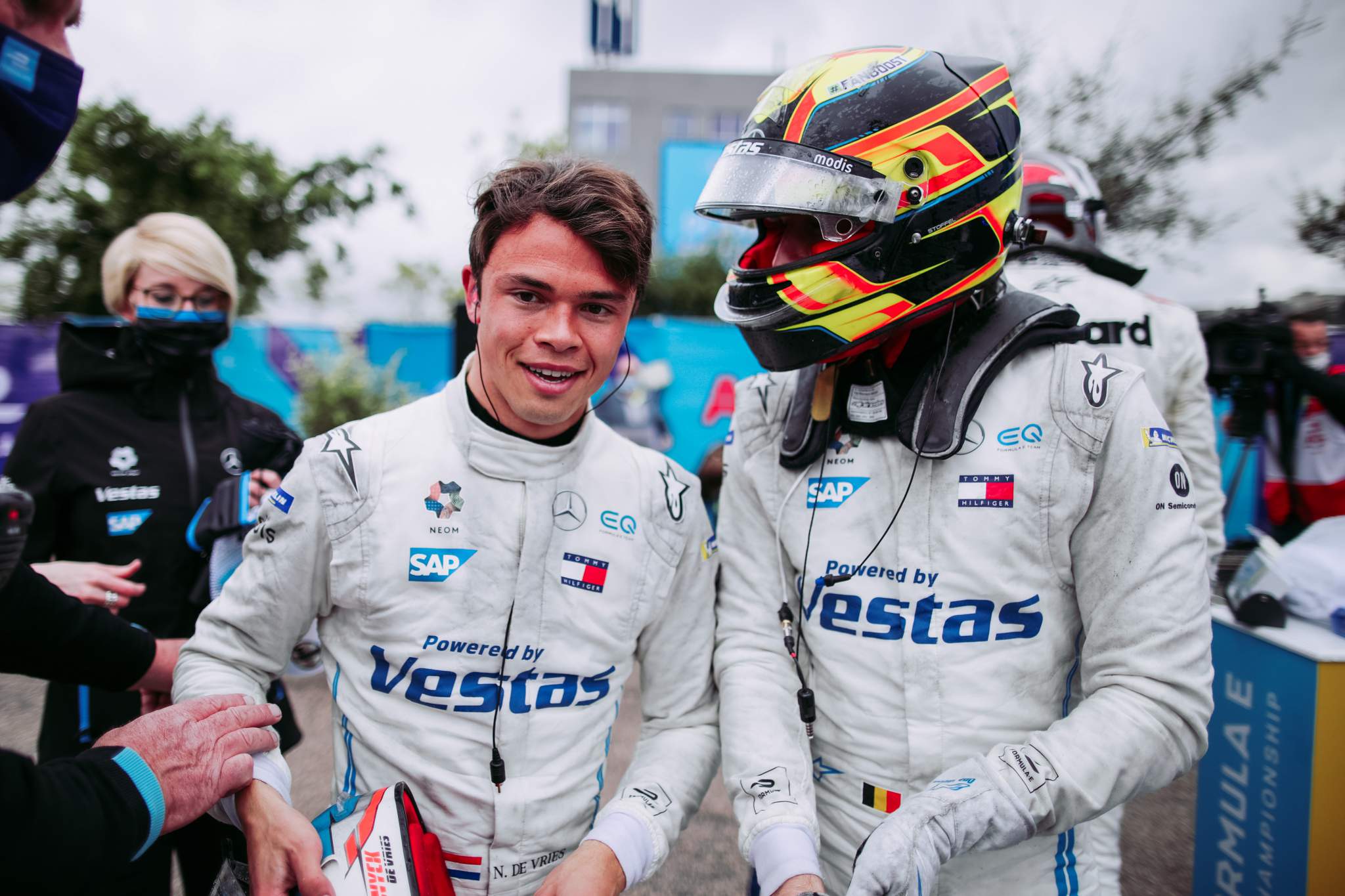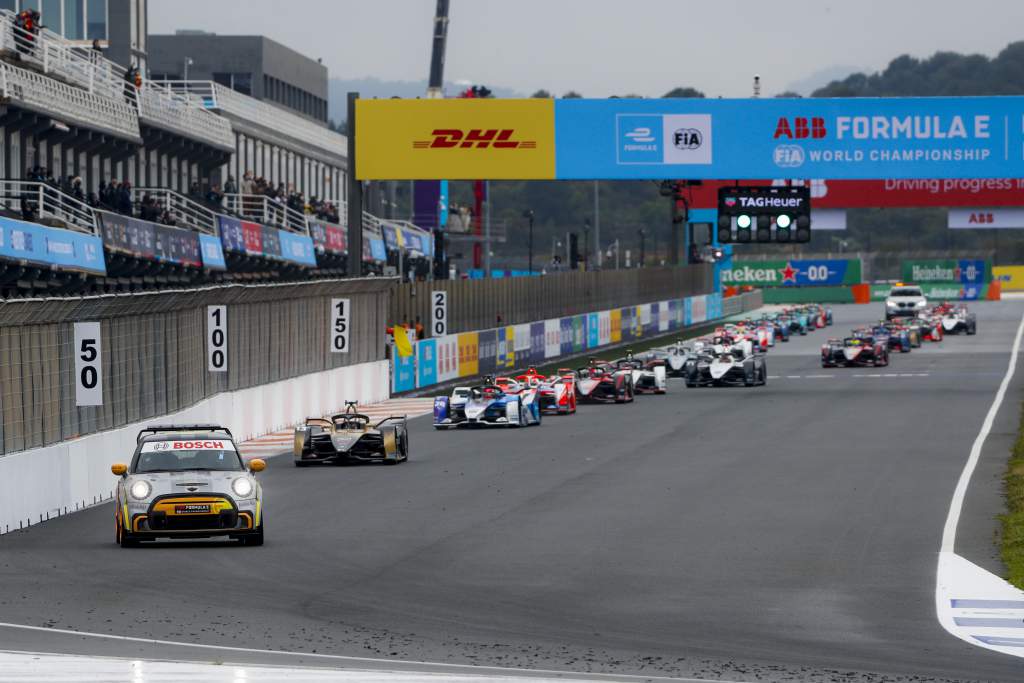The FIA wants the Formula E community to learn from the controversial Valencia race ending to prevent it ever happening again.
The race was thrown into confusion when a rule that gives the race director discretion to deduct useable energy around safety car periods was actioned as the race was about to resume from its fifth and final safety car deployment for a final sprint to the finish.
It led to Mercedes’ Nyck de Vries winning his second E-Prix of the season as he was one of just a handful of drivers to be able to take the chequered flag at anything approaching racing speed.
Several cars stopped on the last lap, coasted across the line or in the cases of long-time leader Antonio Felix da Costa, Oliver Rowland, Alex Lynn, Alexander Sims and erstwhile points leader Sam Bird, got disqualified for going over the regulated energy limit.
“This is clearly not the way we like it, and for sure, we don’t think it’s the type of end of race we would like to have every weekend or every race once was clearly enough,” said FIA director of Formula E and innovative sport projects Frederic Bertrand.
“I hope everybody learned and it will never happen again.”
Bertrand faced media after the race and was asked by The Race if he was concerned that the overall image of the championship had been damaged.
“Are we afraid of the impact? I think on one side yes because you will always have a lot of people saying that it is frustrating, this kind of race,” he said.
“What is clear is that we hope that this will be the lesson for everyone so that we don’t face these type of issues anymore, and that people also understand all the challenges this championship has.
“It’s not only driving, it’s not only managing your race as normal, but it’s also managing all these aspects of energy management and all the information which is happening between the driver, the engineer, and then be able to make the right decision at the right moment.”
Several drivers expressed concern about the perception of the confusing end to the race, and objected to the implication that they and their teams were to blame for what happened.
But winner de Vries said the fact his Mercedes team successfully figured the situation out, with his team-mate Stoffel Vandoorne emerging in third having been 14th at the restart with two laps left, showed it was possible to make the finish.
“It was a little bit confusing but at the same time it was relatively clear that if you cross the line and it’s not the last lap then it’s two laps to go and if you had one lap [of energy] to go in the car, then that won’t take you to the end,” he said.

“I think there are other things of the championship that could be maybe reconsidered at times, but this may look silly – however it was also just well-played by our teams and others kind of missed some information.
“Credit to the work they put in and clearly they were on the ball.
“But it was not necessarily a mistake of the championship, in my opinion.”
The Valencia race was the first in Formula E history to run in fully wet conditions throughout, as well as the championship’s first appearance on a traditional full-length permanent racetrack rather than a street course or other form of purpose-designed temporary layout.
📂 File this under: absolutely bloody bonkers:
🎥 @FIAFormulaE pic.twitter.com/cBxD0CPSQf
— The Race (@wearetherace) April 24, 2021
This was the first serious race structure and energy management controversy Formula E has encountered.
Though Bertrand underlined that he didn’t want a repeat of the Valencia situation, he also emphasised that the unique aspects of the FE format that led to the farcical finish can also be strengths and must be maintained.
“Let’s keep it as a challenge for the championship,” he said of the energy management rules.
“Let’s keep these type of aspects of the championship so that people understand how difficult it is to win here for a team, for a driver, and to be consistent in the season is also very difficult.”






